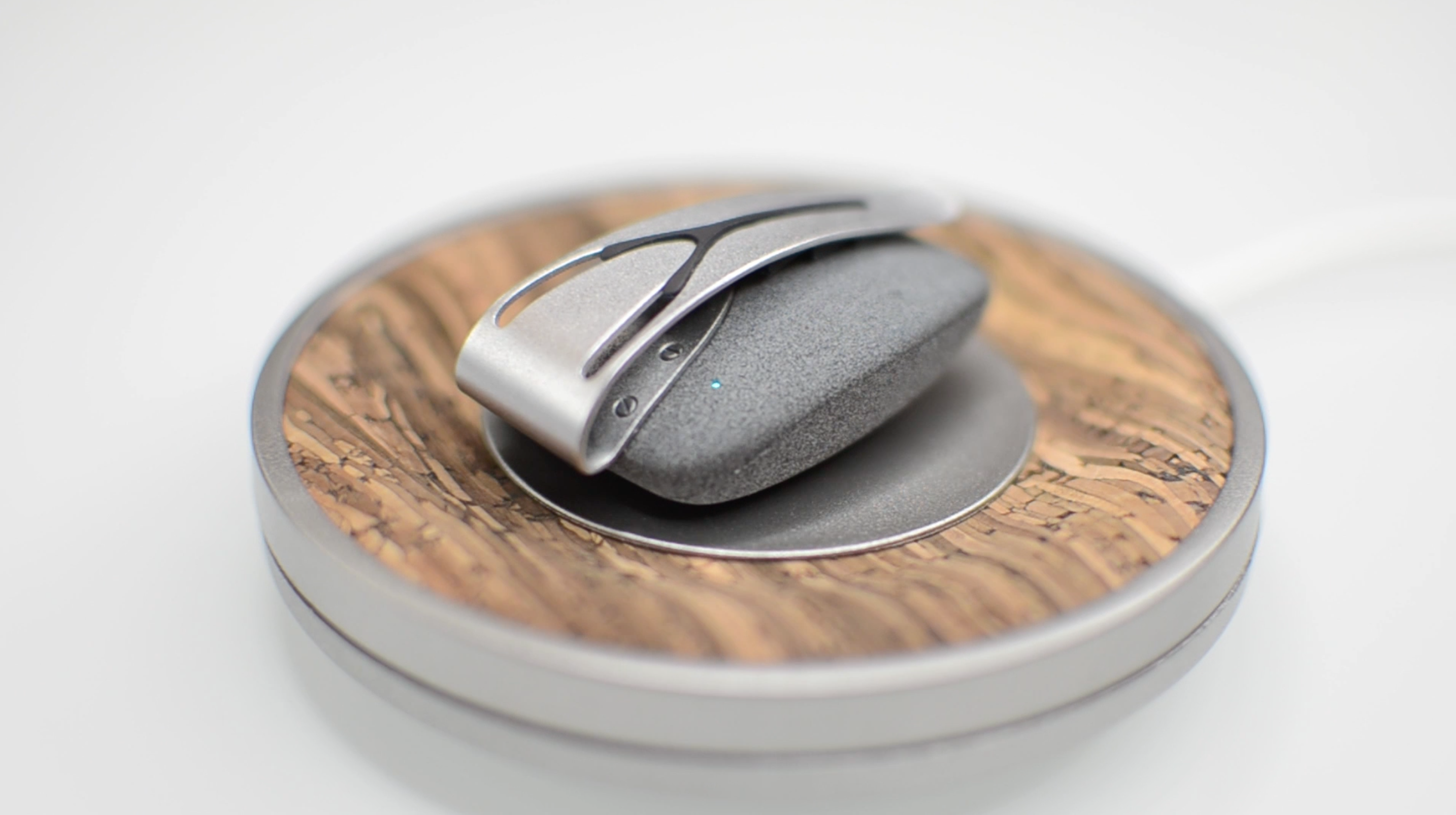
- 2 Min Read / Blog / 3.2.2020

If we’re learning anything at CES this year, it’s that 2015 is going to be the year of the wearable. Activity trackers already made a big splash last year and have helped set the pace for fitness tracking in the future. But as we enter 2015, we’re recognizing more and more that fitness is only one part of what it means to be human.
The just-shipped Spire is a different kind of wearable. Instead of just tracking steps and making assumptions about your activity, Spire senses your breathing and can tell you whether you’re calm, tense, focused, or even active.
The device itself looks like a small grey stone that’s clipped on your belt or bra. It’s rigid enough to deal with wear and tear of daily life, but comfortable enough to be worn all day—and even at night—without too much distraction.
Inside the Spire are several sensors that work together to detect breathing patterns. The raw data is analyzed and reported back to Spire’s iPhone app in near real-time. Spire was constructed to work best when you’re seated, but if you’re wearing it while standing or—even better—moving, Spire will override respiratory tracking and work more like a typical step tracker.
One of the coolest things under the hood is Spire’s inductive battery charging capability and the beautifully designed charging pad that comes with it. Rather than plugging Spire into your computer at the end of the day, all you need to do is remove the clip and simply set the stone on top of the charging pad. It’s probably the easiest feature of the entire product, and the cork-designed charging pad creates a unique aesthetic not accounted for by the majority of fitness trackers on the market.
When we first started testing Spire at the end of last year, the iOS application wasn’t even available in the iTunes Store, and users had to download it from Spire’s website, making us feel like true early adopters. That’s all changed, and the first version of the iOS-only app launched in the store on January 2. Spire intends to release an Android application, but hasn’t indicated a timeline for development.
The app connects to the Spire wearable over Bluetooth low-energy, and like other fitness trackers, the app serves as ground zero for all real-time data visualization. This is where Spire really differentiates itself from the competition: rather than giving users a full download of your day’s worth of data, Spire detects when you’ve been calm, focused, active, or tense for longer than two minutes. If you meet that two-minute threshold, Spire records what it calls a Streak. These Streaks add up to give you a holistic picture of your day, and users can set and adjust goals related to these various states.
Because Spire runs in the background, it relies on alerts to prompt any necessary behavior changes. If the device senses users have been tense for a while, it will alert them and offer help in calming back down. By the end of the day, users can see an hour-by-hour visualization of their progress and, hopefully, use the data to draw meaningful conclusions back to how they’re feeling.
Finally, Spire is one of the first to report respiratory rate to iOS Health through HealthKit. This may not be entirely useful or actionable for most users yet, but holds promise for the future of what iOS Health can offer healthcare professionals and people suffering from acute respiratory illnesses.
One major frustration with Spire is that it sometimes struggles to detect users’ breathing. This seems to be related to the kind of clothing you’re wearing, or if you adjust positions regularly. Luckily, the Spire app will send an alert if it hasn’t sensed your breath after a minute or two so that users don’t lose any valuable tracking information.
For its part, Spire is challenging the conventional wisdom of what it means to be healthy and what someone’s health data looks like when it’s more broadly tracked. There are a lot of opportunities for a device like Spire, including everything from sleep integrations to acute medical care for patients with respiratory ailments. For now, Spire does a great job showing us that being healthy isn’t all about activity, but about our state of mind as well.
For more information, visit Spire’s website.